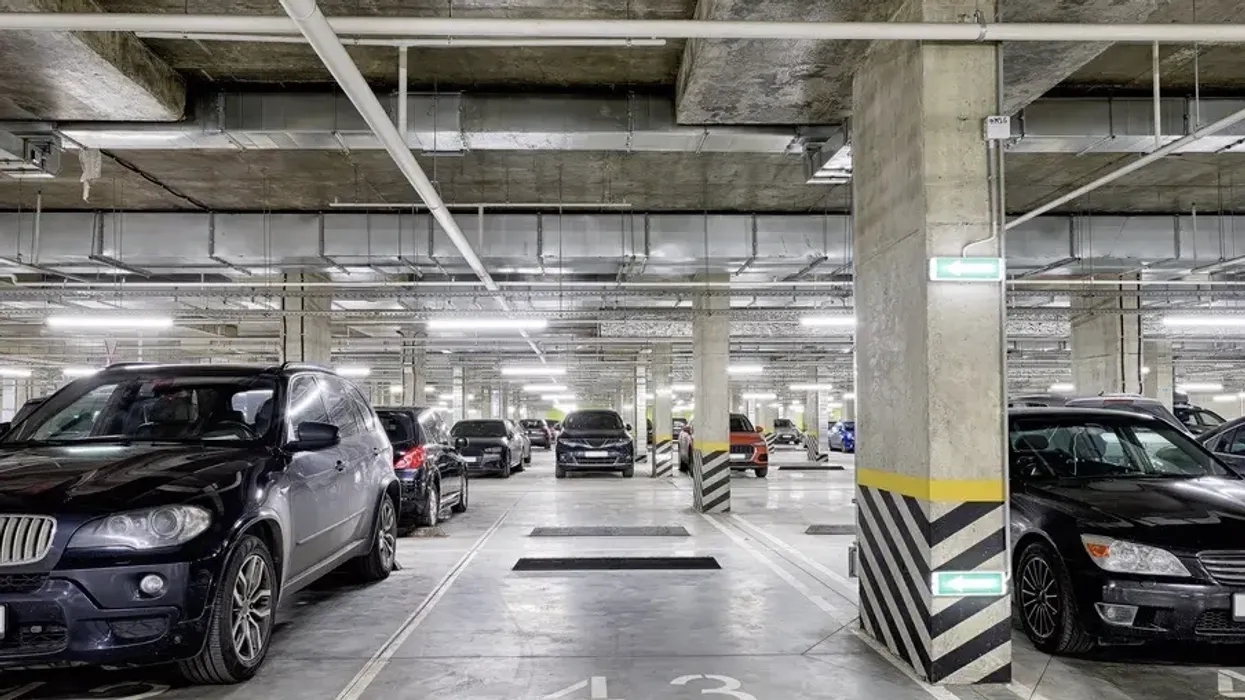When you imagine your ideal urban setting, do you see many cars? I certainly don’t. I see buses and streetcars, wide sidewalks, and generous bike lanes. Yet, walking around Toronto any day of the week, any time of the day, you are bound to see major streets flooded with loud, polluting cars.
This shouldn’t come as a surprise, since many North American cities were developed with, and for, the car in mind. Toronto may have stopped the Spadina Expressway in an effort to prevent a car-dominated downtown back in the 1960s, but one sneaky policy has ensured that cars have always had a welcome home in the city: minimum parking requirements.
What Are Minimum Parking Requirements?
Minimum parking requirements set out an amount of parking spaces that must be included in new developments, but they could be a thing of the past as the City of Toronto proposes new amendments to its policy.
The topic of minimum parking requirements came up last January when the City of Toronto’s Planning and Housing Committee requested a review of the existing policy, which hadn't been updated since 2013. However, a lot has since changed; the average one-bedroom back then went for an average of $300,000, compared to more than $600,000 for a unit today. The city has also made big commitments to reducing greenhouse gas emissions over the next few decades. With these changes in mind, perhaps parking requirements should be next on the docket.
READ: Toronto Removes Parking Minimums for New Residential Developments
The current minimum parking requirements are detailed, but can vary depending on a few factors, such as land use and location. For example, most downtown apartment or condo buildings require:
- 0.3 spots for every bachelor unit
- 0.5 spots for every one-bedroom unit
- 0.8 spots for every two-bedroom unit
- 1 spot for every unit with three or more bedrooms
There are also requirements for different commercial or community uses, like bowling alleys, which are required to have 2.5 spots for every 100 square metres.
When Paying for Parking Doesn't Make Sense
These requirements are not only unnecessary for many downtown neighbourhoods, which tend to be highly walkable and connected to higher-order transit, they're also extremely expensive.
In a presentation by the City, it was estimated that the cost of providing one underground parking spot can range from $48,000 to $160,000. This makes up a huge proportion of the cost of construction, and it’s not always paid directly by the beneficiaries of that parking spot. Because the cost is so high, owners of residential units without parking sometimes indirectly subsidize the cost of parking for others.
These requirements, and their prohibitively high costs, are not helping Toronto’s worsening housing affordability crisis. As well, if Toronto is to achieve its goal of being net zero by 2040, reducing reliance on cars is going to be important. It’s context like this that sparked the announcement to review the minimum parking policy in January 2021, the community meetings on the topic the following June and September, and the eventual proposed amendments released in November, which include a few major changes.
Toronto’s New Parking Policy Proposal
The City is proposing the removal of most minimum parking requirements and in some cases, have suggested using parking maximums. For instance, instead of requiring at least 0.5 parking spots must be provided for every one-bedroom unit in a downtown condo, the new proposal would cap that as a maximum. This will apply to all dwelling units and mixed-use buildings, but not detached, semi-detached, townhouses, duplexes, triplexes, or fourplexes. Instead, it will be up to the market and developers to decide how much parking a development should have. If they want, developers can provide zero parking, with some exceptions for required accessible and visitor parking.
RELATED: For a City of the Future, Mississauga’s Parking Spot Policy is Stuck in the Past
The new proposed policy also redefines the boundaries where different parking rules will apply. In the current system, parking minimums differ depending on whether a site is located in one of four “Policy Areas.” These Policy Areas don’t just apply to parking though, they inform a range of other city planning policies and guidelines. The new proposal will stop using Policy Areas for parking requirements and will instead redefine two new Parking Policy Areas that are specific to parking only. These areas will be determined based on proximity to transit stations and stops with areas closer to transit having lower maximums for parking. They are also meant to take into consideration that not all parts of the City have sufficient access to car alternatives and should still include some car parking infrastructure.
Other interesting elements to the new policy include provisions to encourage infrastructure for electrical vehicle charging and increased bike parking requirements.
Other Canadian Cities Have Been Leading the Charge
This might be a big step for Toronto but eliminating minimum parking requirements is not a new idea. Discussions have already been happening in other cities in Canada for a couple of years. In 2020, Vancouver City Councillor, Sarah Kirby-Yung, put forward a motion for Vancouver to drop minimum parking requirements. Edmonton initiated something similar, after data showed a massive oversupply of parking, with usage hovering around only 50% during peak hours. Because of this, Edmonton unanimously voted to remove minimum parking requirements in June 2020.
What Will This Mean for Toronto?

A removal of minimum parking requirements in Toronto will send a strong message about the type of city Toronto wants to be. But it also represents, in some ways, the city that Toronto already is.
Developers already don’t meet minimum parking requirements. They often negotiate lower amounts of parking to avoid the high costs associated with underground parking, especially for multi-dwelling buildings. The new policy will help validate this existing trend and provide more certainty and clarity for developers.
Nonetheless, there will always be pushback. Some of the most common sentiments we hear when we present projects with minimal or no parking are “do you really think families could live without a car?” or “how desirable can a building be without parking?”. These sentiments are typical, yet lack an open mind to the potential of transit and walkability in creating family-friendly and attractive communities. The only way to prove this is to try it, which is exactly what Toronto’s revised parking requirements will do.
Hopefully, the move away from aggressive parking requirements will make housing more affordable and will push Torontonians to use more sustainable modes of transportation. But in order for a more car-free society to thrive, other things need to happen too. Further investments in transit and cycling infrastructure must be made. Commitments to complete communities must be continued. Innovative new models for things like car-sharing must also be explored. Throwing away minimum parking requirements is a great next step in achieving the sustainable and healthy place that Toronto can be.





















